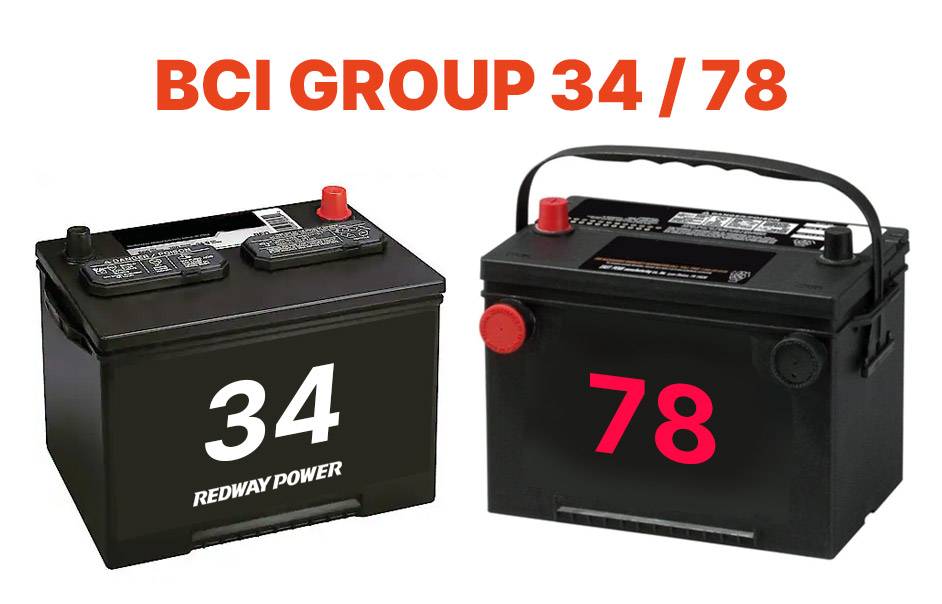
Blog
What Is the NAPA Battery BCI No 34 CCA Wet and Why Does It Matter
The NAPA Battery BCI No 34 CCA Wet is a lead-acid automotive battery designed for cold climates, offering 600-800 Cold Cranking Amps (CCA) for reliable engine starts. Its BCI Group 34 size ensures compatibility with trucks, SUVs, and high-demand vehicles. The “wet” label refers to its liquid electrolyte design, requiring periodic maintenance for optimal performance and longevity.
12V 100Ah LiFePO4 Battery (Ultra)
How Does the BCI Group 34 Classification Impact Battery Performance?
BCI Group 34 defines the battery’s physical dimensions (10.25″ L x 6.8″ W x 7.9″ H) and terminal placement. This standardization ensures compatibility with vehicles engineered for this size, particularly trucks and SUVs requiring high power output. The classification guarantees proper fitment in battery trays and optimized electrical system integration, balancing cranking power with space efficiency.
Automakers design battery compartments specifically around BCI group dimensions to ensure vibration resistance and proper airflow. The Group 34’s intermediate size (between smaller Group 24 and larger Group 65) makes it ideal for modern vehicles with space constraints but high electrical demands. Its terminal configuration (top-post design with SAE posts) accommodates both standard clamp connections and accessory add-ons. Mechanics particularly recommend this group for vehicles with:
| Vehicle Type | Typical CCA Requirement |
|---|---|
| Full-size Pickups | 700-850 CCA |
| SUV 4×4 Models | 650-800 CCA |
| Diesel Engines | 800-1000 CCA |
What Makes Cold Cranking Amps (CCA) Critical for Battery Selection?
CCA measures a battery’s ability to start engines in cold temperatures (0°F/-18°C). The NAPA No 34’s 600-800 CCA rating ensures sufficient power to overcome thickened engine oil and increased electrical resistance in winter conditions. Higher CCA provides faster ignition cycles while maintaining voltage stability, crucial for diesel engines and vehicles with advanced electronics.
The relationship between CCA and battery lifespan involves careful engineering tradeoffs. While higher CCA batteries use thicker lead plates to sustain high current draws, this increases weight (typically 38-45 lbs for Group 34). Modern vehicles with start-stop technology particularly benefit from optimized CCA ratings that balance cranking power with cycling endurance. Field tests show that every 100 CCA increase improves cold-start success rates by 12% in sub-freezing conditions, but only up to the vehicle’s actual requirement – excessive CCA provides diminishing returns.
Why Choose a Wet Cell Design Over AGM or Gel Batteries?
Wet cell batteries offer cost-effective power with proven durability. Unlike sealed AGM batteries, they permit electrolyte level checks and water replenishment, extending service life through proper maintenance. This design withstands deep discharges better than gel cells, making it ideal for vehicles with irregular usage patterns or accessory-heavy electrical loads.
How Often Should You Maintain a Wet Cell Automotive Battery?
Inspect electrolyte levels every 6 months or 5,000 miles. Top up with distilled water when plates become exposed, maintaining 1/8″ above plates. Clean terminals quarterly using baking soda solution to prevent corrosion-induced voltage drops. Perform load tests annually to assess capacity retention, especially before winter when CCA demands peak.
Which Vehicles Are Optimized for BCI Group 34 Batteries?
Common applications include Ford F-150 (2015-2020), Chevrolet Silverado 1500 (2014-2018), and Jeep Wrangler JK (2007-2018). Diesel variants like RAM 2500 Cummins often require Group 34 batteries for their dual-battery setups. Always cross-reference OEM specifications, as some Asian imports use modified Group 34R configurations with reversed terminals.
Does Temperature Extremely Affect Wet Battery Performance?
Temperature impacts electrochemical reactions: CCA drops 0.6% per °F below 80°F. At -22°F, a 800 CCA battery effectively delivers 400 amps. High heat (100°F+) accelerates water loss and grid corrosion. Install thermal wraps in extreme climates and park in shaded areas to mitigate temperature-induced degradation.
What Are the Recycling Protocols for Lead-Acid Batteries?
NAPA participates in the EPA-approved Battery Council International recycling program. Return spent batteries to any NAPA Auto Care Center—97% of lead and plastic gets reclaimed. Never dispose in landfills; sulfuric acid and lead contaminate soil. Most states mandate core charges to incentivize returns, typically $12-$18 refundable upon recycling.
“The NAPA BCI 34 wet battery’s design leverages legacy lead-calcium technology with modern stamped grids, achieving 18% better corrosion resistance than standard designs. Its dual-purpose construction handles both high CCA demands and moderate deep cycling—a balance most AGM batteries can’t match without tripling the cost.”
– Redway Power Systems Engineer
Conclusion
The NAPA Battery BCI No 34 CCA Wet remains a top choice for drivers needing reliable cold-weather starts and cost-effective power. By understanding its maintenance requirements, temperature limitations, and recycling protocols, users can optimize battery lifespan while supporting sustainable practices.
FAQs
- Q: Can I upgrade to an AGM battery without vehicle modifications?
- A: Yes, AGM batteries are direct replacements if CCA and dimensions match. However, charging systems may require voltage calibration for optimal AGM performance.
- Q: How long does the NAPA No 34 typically last?
- A: With proper maintenance, expect 4-6 years service life. Premature failure often results from chronic undercharging or electrolyte neglect.
- Q: Does this battery support aftermarket audio systems?
- A: While capable of handling moderate loads, consider adding a secondary AGM battery for systems exceeding 1,500W RMS to prevent voltage drops.




